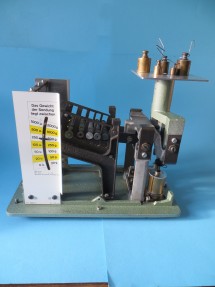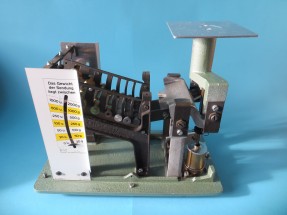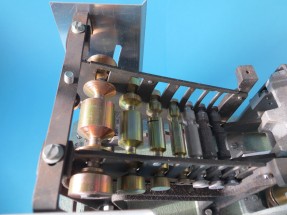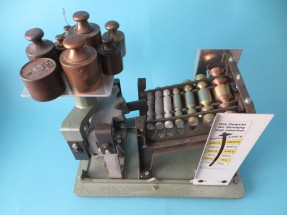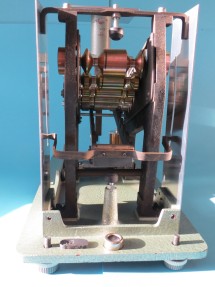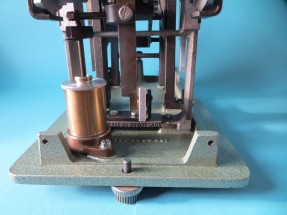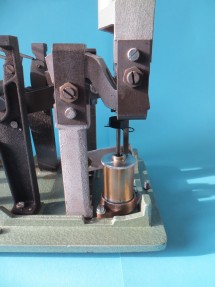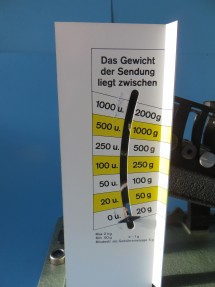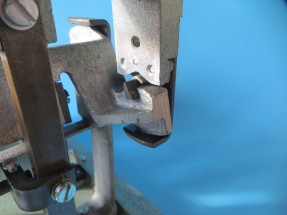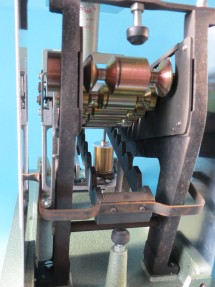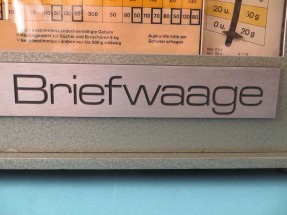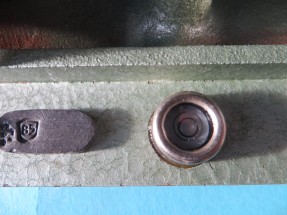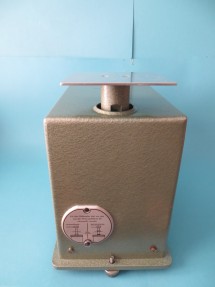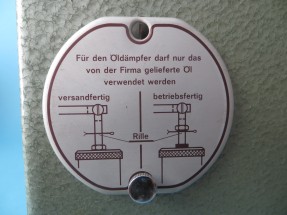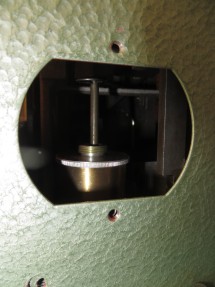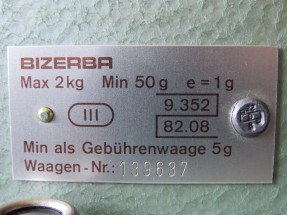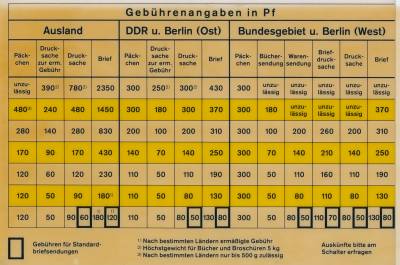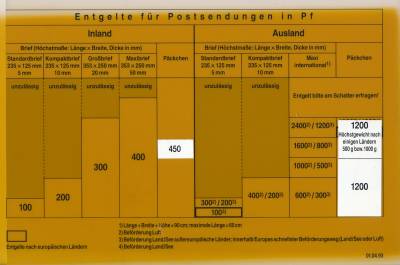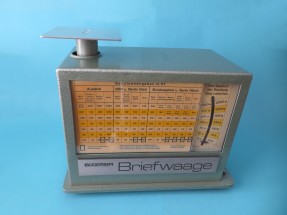
Bizerba letter scale
This nine! kilos heavy letter scale was not intended for domestic use but was intended for use in German post offices and for use in mail rooms of larger companies. This letter scale has a long history and is shown in catalogs of 1936. According to Rübenthal it was already provisionally accepted for calibration on February 20, 1933.
On pp. 2808-2810 of the Dutch journal Meten & Wegen, of June 2002 no.118 R.J. Kok described an article with the titel Een oude brievenweger in moderne uitvoering this Bizerba letter scale and an English predecessor from 1840.
The letter scale weighs in seven weight classes like the German Mail and has seven separate counterweights, the rolls. Per weight class a roll is picked up by the arm of the scale, when a weight limit is exceeded the next counterweight is picked up. Above 2000 grams the movement is halted by a rubber stop. The photographs illustrate this. The weighing motion is damped by a damper filled with silicone oil. The scale has a distinctive ticking metal sound with changing tones: the rolls make themselves heard ar pick up and put down. This letter scale has a spirit level
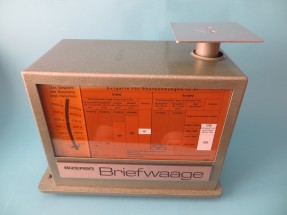
back of the Bizerba letter scale

